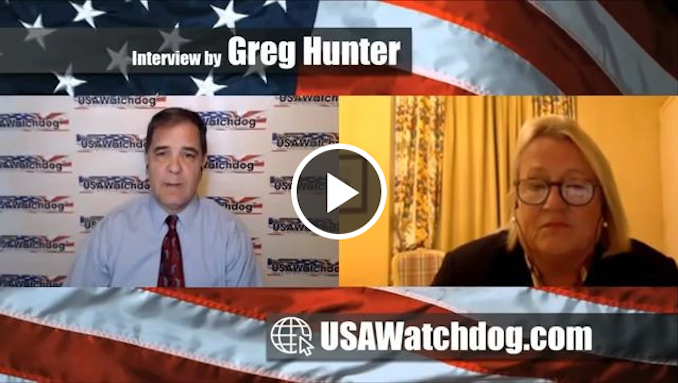To provide another example of Total Economic Return analysis applied to an investment strategy, here is a letter that I wrote to the New York Times in March 1999 regarding investment in private prison companies. ~Catherine Austin Fitts
Tim Egan’s Article on Prisons, March 7, 1999
Ladies and Gentlemen:
Thank you for Tim Egan’s article on prisons. It was an excellent summary of the growth in the US prison population over the last two decades. A welcome follow up might be an exploration on how the money works on prisons.
The federal government has promoted mandatory sentences and taken other steps that will increase the overall prison population to approximately 3 million Americans as recently legislated policies finish working their way through the sentencing system. This means that approximately 10-15 million Americans will be under the jurisdiction of the criminal justice system from arrest, to indictment, to trial, to prison, to probation and parole.
The enactment of legislation ensuring the growth of prisons and prison populations has been a bipartisan effort. Republicans and Democrats alike appear to have found one area where we can build consensus for substantialgrowth in government budgets, staffing levels and media attention. Indeed, during this period, the number of federal agencies with police powers has grown to over 50, approximately 10% of the American enforcement bureaucracy. This is further encouraged by federal laws permitting confiscation of assets such as homes, cars, bank accounts, cash, businesses and personal property that can be used to fund federal, state and local enforcement budgets.
One way to look at the financial issues involved is to view them from the vantage point of the portfolio strategists of the large mutual funds. We have approximately 250-280 million people in America. The question from a portfolio strategist standpoint is what productive value will each one be creating in companies and communities and how does that translate into flow of funds that then translate into equity values and bond risk.
The prison companies are marketing one vision of America with their prison and prisoner growth rates, while the consumer companies are marketing another. The two are not compatible. CCA’s assumptions regarding the growth in arrests and incarceration can not be true if Fannie Mae’s, Freddie Mac’s and Sallie Mae’s assumptions about homeownership and college education rates are. We, the people, cannot refinance our mortgages or buy homes or raise our children and send them to college if we are in jail. Meantime, the municipal debt market is also facing conflicting positions. If prison bonds are a good investment, then some general obligation bonds may in trouble. We, the taxpayers, can not support the debt: we are no longer taxpayers. We have become prisoners. Whatever we are generating in prison labor, it is certainly not enough to pay for the $154,000 per prisoner per year costs indicated for the full system by the General Accounting Office.
It would be very illuminating to get the rating agencies and the ten largest mutual funds together in one room for an investor roundtable to discuss pricing levels on the investment of our savings that is internal to their portfolios and ratings. We would compare equity valuations and growth rates of:
- Companies who make money from the American people losing productivity
- Companies who make money from helping the American people grow more knowledgeable and productive.
We are investing in two different visions that can not both come true.
We could then calculate which was going to succeed, and what the integrated pricing level would be. Better yet, what could happen that would make the most money for the investment community. The question is which vision is best for we, the equity investors of America? And why are investors assuming both win as they price their stocks and bonds?
It is critical to look at prison policy from the standpoint of maximizing return on equity investment. It would be a terrible thing, while I can no longer pay taxes or buy a house or send my son to college because I am in prison, if my vested pension benefits were wiped out by the time I re-entered society. It is bad enough that my life savings are being invested in companies that make money from promoting that me and my family should be arrested and incarcerated. It would be worse if I and my family were broke because companies that make money from loss of productivity turned out to also be a bad investment.
Such a roundtable might make for a great New York Times article. If you are willing to take it on, Solari would be happy to assist your staff by contributing background analytics on how the money works in prisons.
Sincerely Yours,
Catherine Austin Fitts





Robert Slobins gave a wonderful comment. Key part is when he said, “….This will not help America’s relations with the rest of the planet, especially when the rest of the planet is considering withdrawing financial support of the United States….â€. This “…withdrawing…†has started, but fullness of it not obvious. Africa’s complete rejection of General Ward’s AFRICOM is part of this. It is a thousand times easier for the less industrialized societies to become independent. Geography dictates that the process will begin, as it has begun, in Africa and South America. It also always works, (as Mao well understood in his ‘Long March’), from the interior to the exterior. ‘To hell with the shore cities’ said Mao, ‘that will come later’. And it did in the same fashion that New York remained Tory until end of the Revolution.
With shortages of the basics such as wheat and corn, and adding on increased trucking costs, the price of a simple loaf of bread is skyrocketing.
We in America should start local with the power we have and go into town and start passing exceptionally harsh and draconian laws. Every square foot of the most common crop in the United States should be taxed so high that the owners would be almost assured of loosing their property. America’s most giant crop is lawn. At the same time every 50 square yards of barley would be given high tax breaks.
Thank you for reposting your nine-year-old letter.
You challenged America with a choice: profit at others’ expense, or profit at others’ benefit. I believe that American history since 1999 has provided you with ample evidence of what your nation chose.
This is not lost on the world. I have since moved to Prague and have had interesting conversations with those who lived through the authoritarianism and those whose parents suffered through it. People here know what that proverbial rat smells like, and they pick up on the stench. Although there is a long history of friendship–Woodrow Wilson occupies a position of honor because of his involvement in Czech and Slovak independence. I am beginning to see an erosion of patience and a sense of betrayal when it comes to dealing with Americans here on the ground.
Despite the appetite for things American here including investment, I wonder just how long the good will is to last. For example, in response to American criticism of Czech records on human rights, the prime minister shot back with questioning American policy on torture and imprisonment in the so-called “war on terror”.
In response to American criticism of Czech corruption, Czechs are asking Americans just what is their nation’s record on corruption. People here are quite aware of what is happening.
The Czechs know all about the imprisonment industry and are, I am sure calling their relationship with America into question.
Also, such questioning is not limited to Czechs. People all over the world are becoming alarmed at developments. This will not help America’s relations with the rest of the planet, especially when the rest of the planet is considering withdrawing financial support of the United States.
An imprisoned, controlled nation loses its ability to produce and destroys its capital. It becomes a poor credit risk.